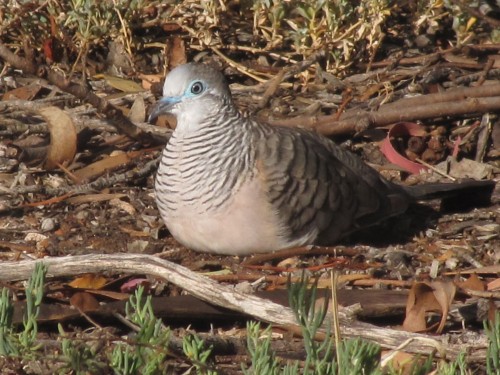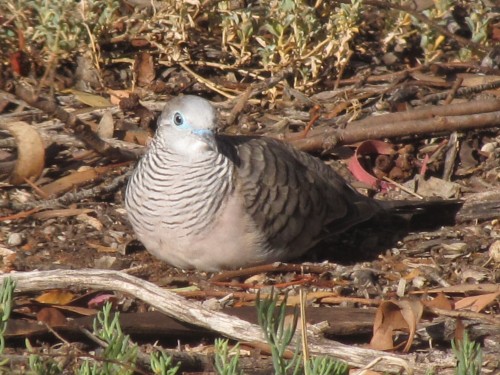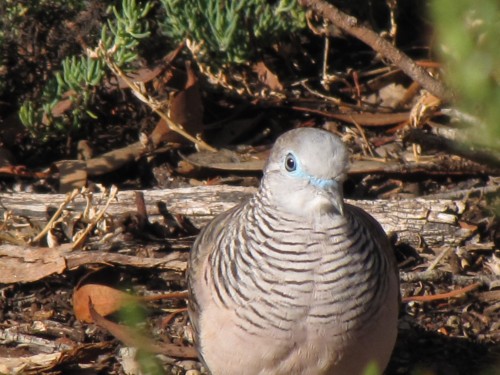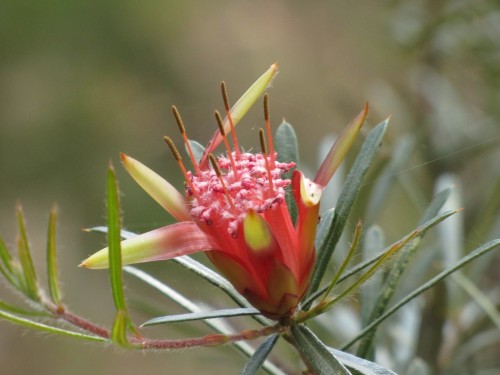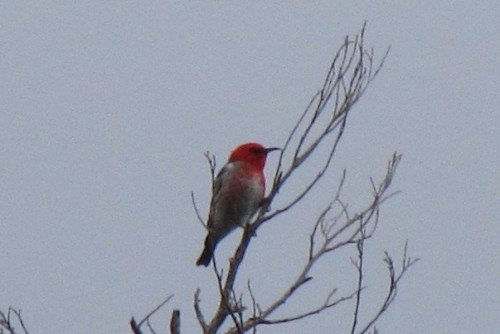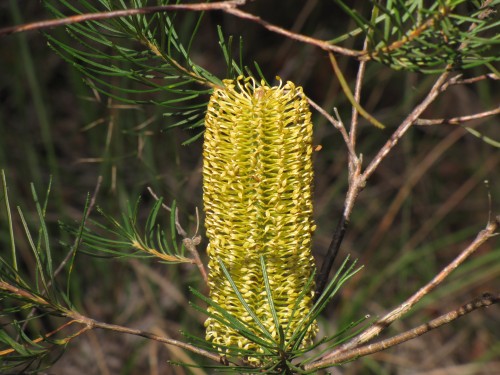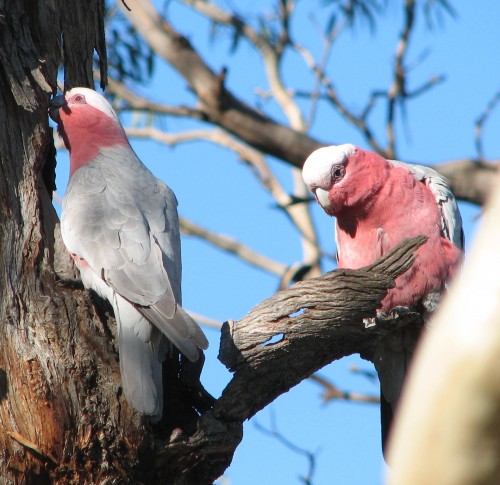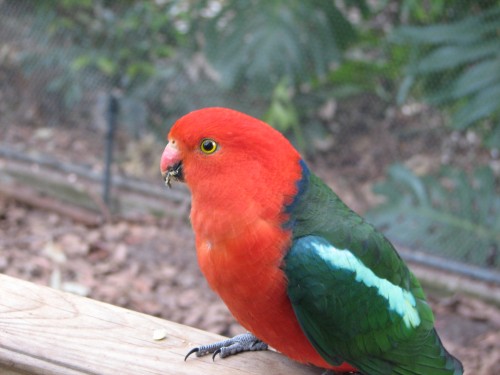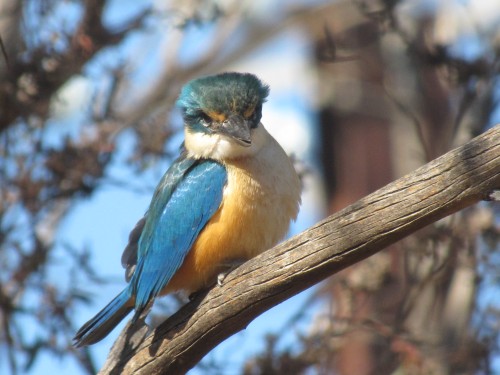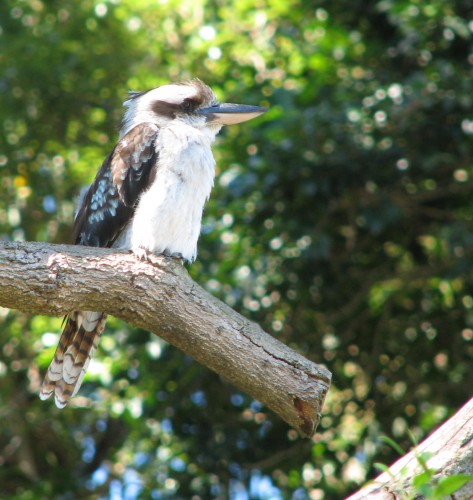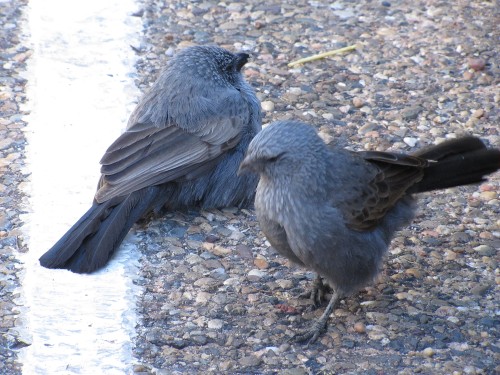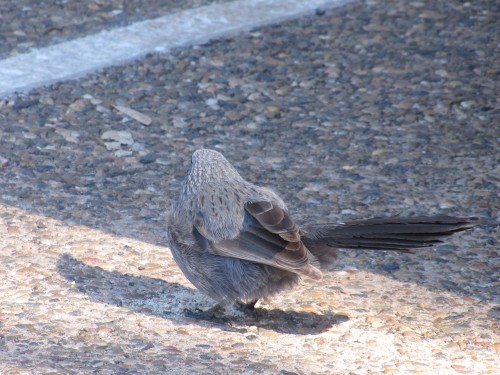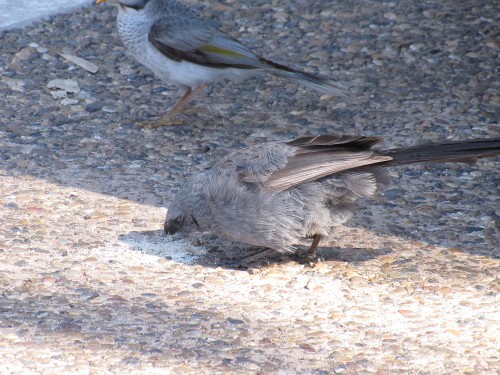Peaceful Dove posing in the sun
One of my favourite Australian birds has to be the Peaceful Dove, shown in today’s photos. I meant to show these shots a few weeks ago when I took then, but somehow life got in the way. The photos shown today are of a solitary bird in our garden one morning. It looked like it was going to visit the nearby bird bath. Instead, it found a sunny spot to settle down for at least ten minutes – enough time for me to go to the other end of the house to collect my camera.
The Peaceful Dove is one of my favourite birds because they are quiet, gentle looking birds which come regularly into our garden. We frequently hear them calling their soft ‘toodle-doo” call, and they make no fuss at all as they flutter from tree to tree. The markings on their plumage shows delightful patterns and soft, pastel colours. Today’s photos show the colours well, lit up by the early morning sunshine.
As an extra comment on this species, I didn’t fully appreciate the beautiful blue skin around the eyes and beak. This shows up really well in today’s shots.
A new bird for me
Over recent years we have often visited family in Sydney, a two day drive from home. Whenever we have the chance we visit local bushland, parks and botanic gardens. Today was one such opportunity. For nearly two hours this afternoon my wife and I visited the Ku-ring-gai Wildflower Gardens in St Ives. My wife is interested in Australian native plants and areas featuring our native plants also attract a wide range of our native birds as well.
Over the years I have had mixed results birding at these gardens. On some occasions the birdlife is so prolific I have trouble keeping up with identifying what I am seeing, writing down a list of birds seen, and photographing birds as they come into camera range. On other occasions the birdlife seems almost non-existent.
Like today.
During the eating of our picnic lunch I heard only 4 individual birds: Australian Raven, Noisy Miner, Black-faced Cuckoo-shrike and a Red Wattlebird. I actually only saw the last two in that list. It was not a good start. Little did I know how our time in the gardens would end.
After lunch we went on one of the walks through the natural bushland near where we had lunch. This walk has proved quite productive birding on a few occasions. During the walk we saw a few native plants in flower and this sustained our interest. I’ve shown several of these flowers on this post.
Other bird species encountered include an immature Grey Butcherbird, several Silvereyes, Sulphur-crested Cockatoos, Rainbow Lorikeets and a Little Wattlebird. I think I saw a small flock of Red-browed Firetails fly across the road as we left, but they flew too quickly for a positive identification.
Just moments before we were about to leave, however, I had one of those wonderful experiences I have called Great Birding Moments on this site. I saw a male Scarlet Honeyeater – for the very first time in my life! A “lifer”! This has been one species I have wanted to see for a long time but it has eluded me so far. What is more, I managed several very poor photos. I hesitate to show one here because it is not up the standard I like to show here, so please forgive me. I will try to get a better one someday soon.
I should add that this photo was taken in poor light – it was very overcast – against dark clouds and at full zoom on my camera at a distance of about 40 metres. And the bird was sitting at the top of a 20 metre tree. So, all things considered, I was really pushing the limitations of my camera. The image is slightly cropped as well.
Further reading:
More Superb Fairy-wrens
Most mornings we have breakfast in our sun room overlooking our garden and several bird baths all within five metres of where we sit. Quite a few of the photos I have shared here over the years were taken from that very spot. After breakfast I usually read the daily paper and attempt the various puzzles as time and patience allow.
Yesterday I looked up from my paper to see our little family of Superb Fairy-wrens coming in for a drink and a short splash in the water. As I watched I did a quick count – and then an excited double check. We now have five wrens in our garden. They have either been joined by another, or have been successful in breeding this summer. One of them was begging from the coloured male, so I lean towards a happy nesting event recently.
This little troupe of birds has grown steadily in numbers over the last three years. I had recorded this species in our garden over twenty years ago and then they disappeared until three years ago. I suspect the many feral cats in the district are to blame.
On our arrival home after an overseas trip in the middle of January three years ago we were delighted that a coloured male and a female had taken up residence in our absence. Several family groups have always been present up the hill from home in some bushland about a kilometre away.
For some months we saw just the two of them. Later that year we saw three together on many occasions, and the next year there were four – and now we see five together. We are delighted to see and hear them in our garden on most days and pleased that they consider our garden a suitable habitat in which to reside and breed.
I am not showing any new photos today because I didn’t take any on this occasion. Instead, I have listed below some links to previous articles with photos of wrens for you to look at.
Further reading:
- Great birding moments #35 – Superb Fairy-wren
- Great birding moments #34
- Wrens at the birdbath
- Our wrens are back
- Beautiful Superb Fairy-wren
- Great birding moments #21 Splendid Wren
Birds for Australia Day
Today is our national – Australia Day, celebrating the arrival of the first European settlers in this wonderful country of ours. This day conjures up all kinds of feeling and images and the celebration of this event has grown in strength in recent decades. When I was growing up the day was reasonably low key, but in more recent years that has ramped up.
Throughout Australia it is celebrated by many ways, from family barbecues in the backyard, in a park, at the beach or out bush – such as a national park. Impromptu games of cricket or tennis are almost mandatory, as are gatherings in huge numbers to watch our national teams and players striving on the tennis court or on the cricket oval. This summer sports fanatics are further blessed with the soccer Asian Cup matches being played in our country.
I prefer a much more sedate endeavour: birding.
At the time of writing this a few days before the event, I have yet to decide where I will go birding. The weather looks like being kind to me, so I might venture out into some nearby patch of scrub, or perhaps somewhere along the nearby River Murray, or even venture a little further to a beach. Or I might just stay home and bird on our patch.
Meanwhile I will show off some photos of well-known and beautiful Australian birds for the enjoyment of my readers.
Happy Australia Day to all of my readers.
Apostlebirds by the dozen
Apostlebirds are not all that common in South Australia. In fact, they are confined to a few locations in the mid-north of the state plus one site I know of near the eastern border south of Renmark. In parts of New South Wales, however, they are widespread and common in many places. They are also very confiding birds and will happily share their little patch of bushland – if you share some of your morning or afternoon tea.
On our recent visit to the Western Plains Zoo at Dubbo I was surprised at just how common they actually are, but then there is plenty of food for the taking, both in the animal enclosures and in the picnic areas where human food scraps are in abundance. It is not surprising then that I was able to get at least several good photos during our visit.
Apostlebirds are not the most photogenic birds found in Australia, being only dull grey with some black patches. What they lack in colour they certainly make up for with their gregarious nature. Because of this nature they certainly are one of my favourites and I always look out for them wherever we travel.
